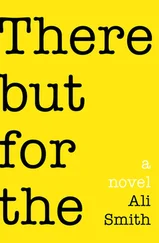After his return to Baghdad, he got to know Widad Ahmed, who was studying cello at the Academy of Fine Arts. They met after his return from Budapest, when he gave a lecture about Bach at the Academy. She was the daughter of a senior official at the presidential palace who’d died in mysterious circumstances. Widad secured Amjad a good position in Baghdad, for she belonged to a family of important government officials and had authority, influence and wealth. Her brothers were top-ranking government officials, a category that included ambassadors, ministers and councillors. Thanks to her status, she succeeded in easing the political pressures on Amjad on account of the stigma that was attached to him. Amjad, moreover, took full advantage of his wife’s influence and frequently travelled with her to Brussels, New York and Paris. In Paris, he strolled with her in the alleys and parks, and visited the cafés. Then he decided to stay on for a year to study at a Paris conservatory, where he became acquainted with a famous violinist called Eric Luc and with whom he became close friends.
In winter, there were always soirées at the house of Widad and Amjad Mustafa, in the roomy, light pink lounge. Huge chandeliers hung from the ceiling and the piano stood in the corner. Drinks were ranged on a shelf, as if in a bar. Friends and their wives all met up, especially on Thursdays, to drink wine and have supper.
Amjad Mustafa’s friendship was of paramount importance to Kamal Medhat. After meeting him, he didn’t stay at home much. He spent a great deal of his time practising the violin at the Al-Rabat Hall on Al-Maghreb Street; he also gave more and more concerts. He visited Amjad, in whose house he was introduced to artists, writers, intellectuals and painters. Among them were the oud player Munir Bashir, the famous Armenian pianist Beatrice Ohanessian, the sculptor Mohammad Ghani Hekmat, and Khaled Al-Rahhal. Everybody confirmed that Kamal Medhat, who had emerged on the scene out of the blue in 1983, spent most of his evenings talking to the musicians, painters and poets who gathered in Amjad and Widad’s house, where the large window of the lounge looked out over a wooded garden and where birds could be heard chirping and could be seen hopping about. Nothing disturbed the peace and joy of those ambitious artists or hampered their artistic creativity, except the sound of bombs. Iran’s artillery shelled Basra and the cities of the south. Everybody realized that Saddam was slowly giving up his Blitzkrieg tactics. In fact, the war’s toll was heavy and costly, and people despaired of seeing its end. Every evening Baghdad TV showed a programme about the war. This presented images of dead Iranians torn to pieces by fighter planes, their guts strewn over the ground, their heads severed and their smashed faces covered with dust. The programme didn’t relay footage of the battles between the two armies, but only the maimed bodies and scattered limbs of the enemy. The camera moved along rows of laid-out bodies and panned over piles of corpses, zooming in on a burnt face, a severed hand or a half-buried body. Such scenes were the focus of conversations about the war among Amjad’s artist friends.
The group held different, conflicting views. Kamal Medhat was greatly dismayed by the war, although he didn’t give clear expression to his views. He was surprised by Amjad Mustafa’s ideas and convictions, for he was the only one among the artists to use a racial justification for the war. He would say, as he drank a glass of Scotch on the rocks, ‘The war broke out because of Persian malice towards the Arabs, because Arabs are superior. They’ll never give up waging war against Iraq.’
Amjad Mustafa gave a racial and ethnic justification, in contrast with the religious justification that Kamal Medhat often heard from Iranians in Tehran. Iranians believed that the war had started because of the Christians among the Baath leadership. These Christians, according to Iranian views, were bent on destroying Muslim unity. Kamal began gradually to understand his friend’s ideas and beliefs, ideas that were common among a particular class of intellectuals and artists. Discussion between them became heated. Kamal didn’t believe in the totalitarian ideas imposed by the state on people, while Amjad’s arguments grew more vehement every time there was a discussion of the war. He stood in the corner, describing the enemy’s dead in the most violent terms. He felt that killing was sometimes justified and necessary, because it involved the survival of the fittest. Kamal, on the other hand, sat quietly in the same corner, near the mantelpiece on which stood some wooden and silver decorative objects. He held a glass of Scotch and quietly stroked his long, greying beard, which enhanced his looks so well. Facing him stood Amjad with his large shaved head and his black drooping moustache. He represented the nationalist image of masculinity that was prevalent in Baghdad at the time. Standing in the corner, he held his glass and attacked Kamal, who didn’t believe in the manifest destiny of nations.
Amjad believed that the Arab nation had an immortal message, which was the spiritual development of the world. The statement made Kamal burst into laughter. Kamal found it mind-boggling that this talented artist could be a convinced Baathist and an extremist Iraqi, who read Nietzsche and Fichte’s Addresses to the German Nation , and admired Chamberlain, especially his book The Foundations of the Nineteenth Century . Amjad also read the literature of the Baath Party, which was influenced by Gustave Le Bon’s ideas that race and nation were identical. Amjad, in fact, believed that Arabs were surrounded by inferior races who were created for barbarity and savagery. At best, these races were the recipients of civilization and not its makers. These inferior races felt nothing but hatred and envy for the Arabs. He threw a book entitled Iranian Wars Against Iraq , at Kamal an old publication with torn covers and yellowed paper. It was a primitive edition published for the first time in the nineteenth century.
‘Read Suleiman Faïq’s book and you’ll find all the information you need there.’
His fundamental idea was the necessity of returning to history, an idea that nauseated and suffocated Kamal Medhat. Was it possible that anyone could hold such views? Thinking of human history in terms of perpetual conflict would negate all other forms of relations. Kamal Medhat started to read the papers every day in order to follow up on the historical school of thought that Saddam Hussein himself endorsed. This school aimed to prove that the three-thousand-year history of the region was evidence of the unceasing hostility of the Persians, Kurds and Turks towards Arabs. Kamal Medhat believed that this view saw history as controlled by the human will. It was an idea that was intent on highlighting one type of relationship at the expense of all others, negating commercial, cultural and other connections. Was warfare the only connection that existed between Persians and Arabs? The historical school wanted to ignore the conflicts among Semitic peoples and emphasize only the Persian malice against Arabs. This was the view that the regime and its ideologues wished to impose on art. It made Kamal wince in disgust and revulsion.
Then Amjad got up, took a book from his library and read aloud a text by the Assyrian King Sennacherib: ‘I slaughtered them like sheep and cut their throats with a single strike… And on the battlefield, the entrails and heads of soldiers were covered with dust and the flanks of my horses sank deep in streams of blood.’
Amjad trembled as he read the passage. A patriotic tremor shook his whole being. The passage filled him with ecstasy at the scenes of killing, destruction and devastation produced by war. It was his joy to achieve overwhelming victory over the enemy.
Читать дальше












